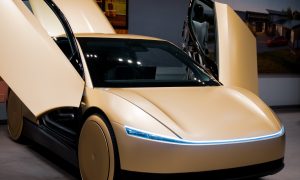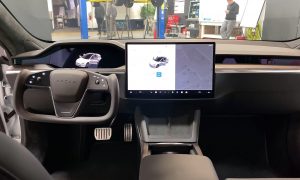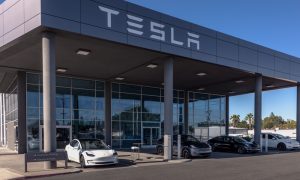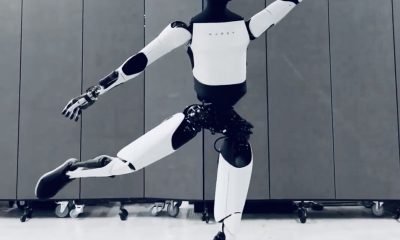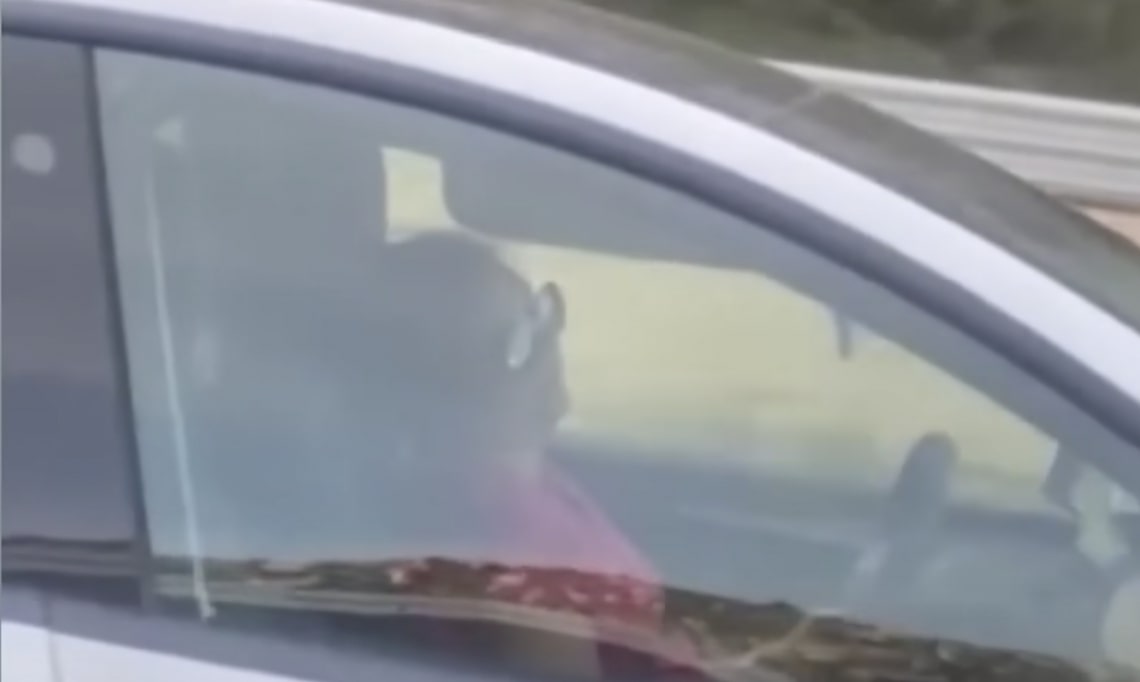

News
Tesla with sleeping driver proves there’s still misunderstanding and irresponsibility surrounding autonomy
Update: 11:06 AM EST: Paragraph 7 added to show the probability of the driver having a medical emergency. California Highway Patrol saw the vehicle and noted the driver was awake after catching up to the car.
A Tesla Model Y with a sleeping driver was recently spotted on the I-15 Freeway near Temecula, California, which proves that people and media still have a vast misunderstanding and irresponsible tone regarding the capabilities of semi-autonomous vehicles.
According to a report from KTLA 5, a woman in a Tesla Model Y was followed by another driver for more than fifteen minutes on the California interstate in an attempt to wake the woman who was taking advantage of the automaker’s semi-autonomous driving functions up.
The report and the incident prove there are still huge misunderstandings in the capabilities of semi-autonomous driving suites, including Tesla’s Full Self-Driving and Autopilot, which require users to remain vigilant and be prepared to take over the vehicle at any point.
Drivers utilize semi-autonomous vehicle functionalities irresponsibly often, and social media has proven time and time again that people take advantage of the capabilities, even though they are not fully autonomous.
It is no secret that people and companies have utilized whatever they can to alleviate themselves of the responsibility of paying attention while the car operates some tasks on its own. With the introduction of advanced driver assistance systems (ADAS) over the past several years, drivers have taken advantage of the functions to instead play on their phones, read books, eat food, or even catch up on sleep.
Tesla’s camera-based driver monitoring system goes through the cellphone test
However, the risks that come with this behavior are potentially catastrophic. For one, those who use these functions irresponsibly put themselves and every other driver on the road at risk because if the vehicle needs assistance or encounters a situation where it would not react safely, the driver is responsible for taking over. Additionally, if an accident occurs, it can be framed as Tesla’s, or any other manufacturer’s fault, depending on the vehicle used, and instances like this can set the future of semi-autonomous and autonomous driving back years due to skepticism.
There is the possibility that the driver had some type of medical emergency or accidentally fell asleep, in which the Tesla’s functionalities kept the operator and others safe. Police stated the driver was caught up to two minutes after receiving calls about the driver, and the driver was attentive at this time.
However, the media’s portrayal of the situation also proves that many are widely uninformed regarding the capabilities of Teslas. While Tesla’s Full Self-Driving suite has caused controversy over its name, the automaker continues to remind those who use it to remain vigilant, as the cars cannot truly drive themselves.
In Tesla’s FAQ section of the Autopilot and Full Self-Driving page, the company answers the question, “Do I still need to pay attention while using Autopilot?:”
“Yes. Autopilot is a hands-on driver assistance system that is intended to be used only with a fully attentive driver. It does not turn a Tesla into a self-driving car nor does it make a car autonomous.
Before enabling Autopilot, you must agree to “keep your hands on the steering wheel at all times” and to always “maintain control and responsibility for your car.” Once engaged, Autopilot will also deliver an escalating series of visual and audio warnings, reminding you to place your hands on the wheel if insufficient torque is applied. If you repeatedly ignore these warnings, you will be locked out from using Autopilot during that trip.
You can override any of Autopilot’s features at any time by steering, applying the brakes, or using the cruise control stalk to deactivate.”
Media labeling the vehicle as “a self-driving Tesla” is a disservice to people and the company. Teslas do not drive themselves, as the vehicles are defined as Level 2, according to the Society of Automotive Engineers Levels of Driving Automation. Level 2 systems reiterate that the driver is still responsible for driving the car when these systems are activated. “You must constantly supervise these support features,” the SAE says. Level 3 to Level 5 systems maintain that the operator is not driving the car, but Level 5 systems are the only ones that are explicitly labeled as “self-driving.”
“This feature can drive the vehicle under all conditions,” the SAE table states.
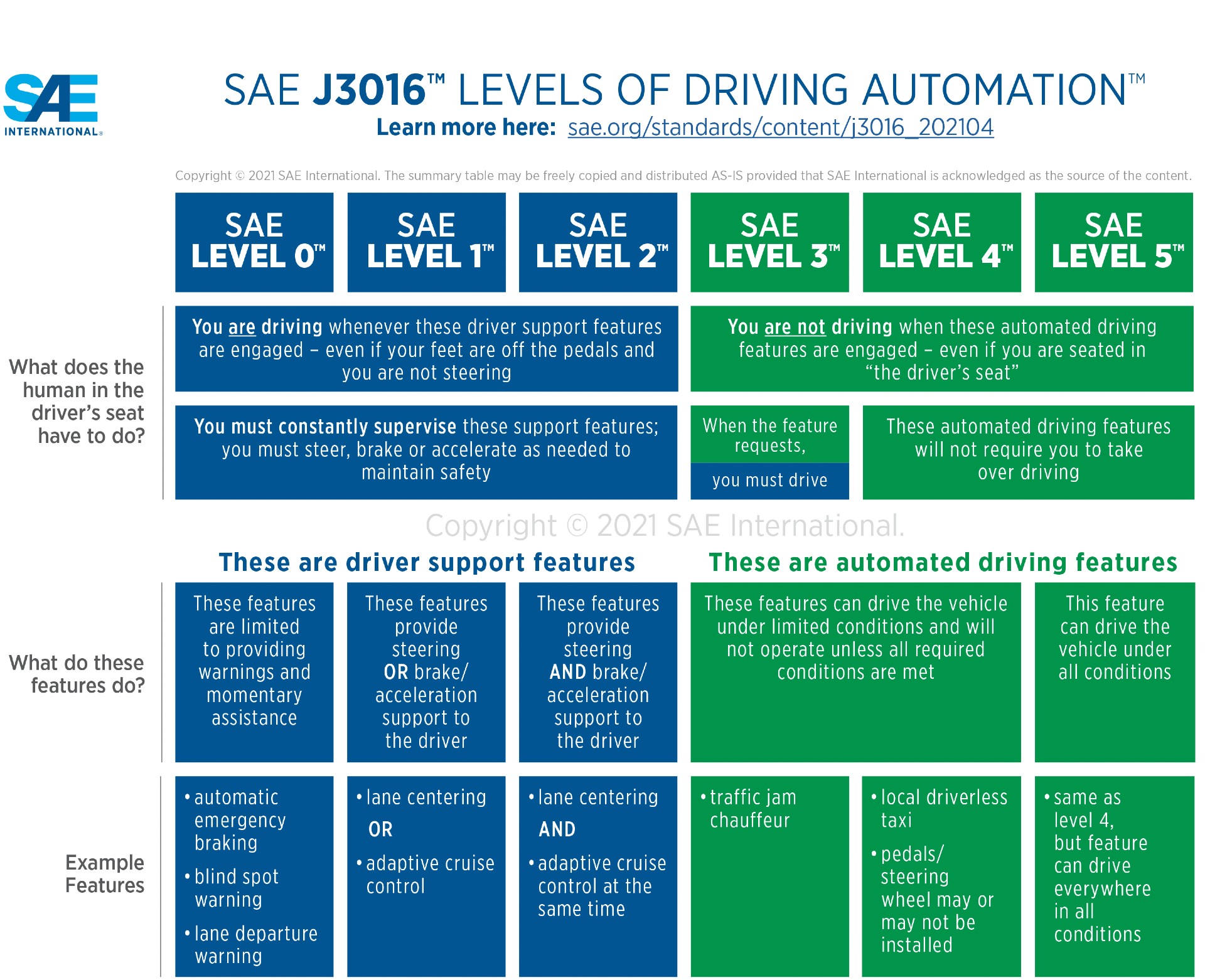
Credit: Society of Automotive Engineers
Recent ratings by Consumer Reports showed that Tesla’s biggest flaw was driver monitoring. Many systems use cabin-facing cameras to monitor eye behavior to ensure the operator is keeping their eyes on the road. Teslas use a series of audible and visual cues to alert drivers of their inattentiveness, and steering wheel sensors make sure the driver keeps their hands on the wheel.
However, various cheat devices have been marketed across the internet, and in this instance, the driver appears to have their hands on the wheel while they are dozed.
Tesla activated camera-based driver monitoring in May 2021. “The cabin camera above your rearview mirror can now detect and alert driver inattentiveness while Autopilot is engaged,” Tesla said in the notes. Tests of Tesla’s driver monitoring tests showed the system was effective in some instances, especially when looking at cell phones, with alerts coming in 15 seconds.
The potential irresponsibility of users puts major risks to those on the road and the companies that develop these driver assistance programs. While there are workarounds through the previously-mentioned cheat devices, people have to know their irresponsibility could cost them, or others, their lives.
I’d love to hear from you! If you have any comments, concerns, or questions, please email me at joey@teslarati.com. You can also reach me on Twitter @KlenderJoey, or if you have news tips, you can email us at tips@teslarati.com.
News
Tesla Robotaxi just got a big benefit from the U.S. government
The NHTSA is looking to help streamline the application process for companies developing driverless vehicles.
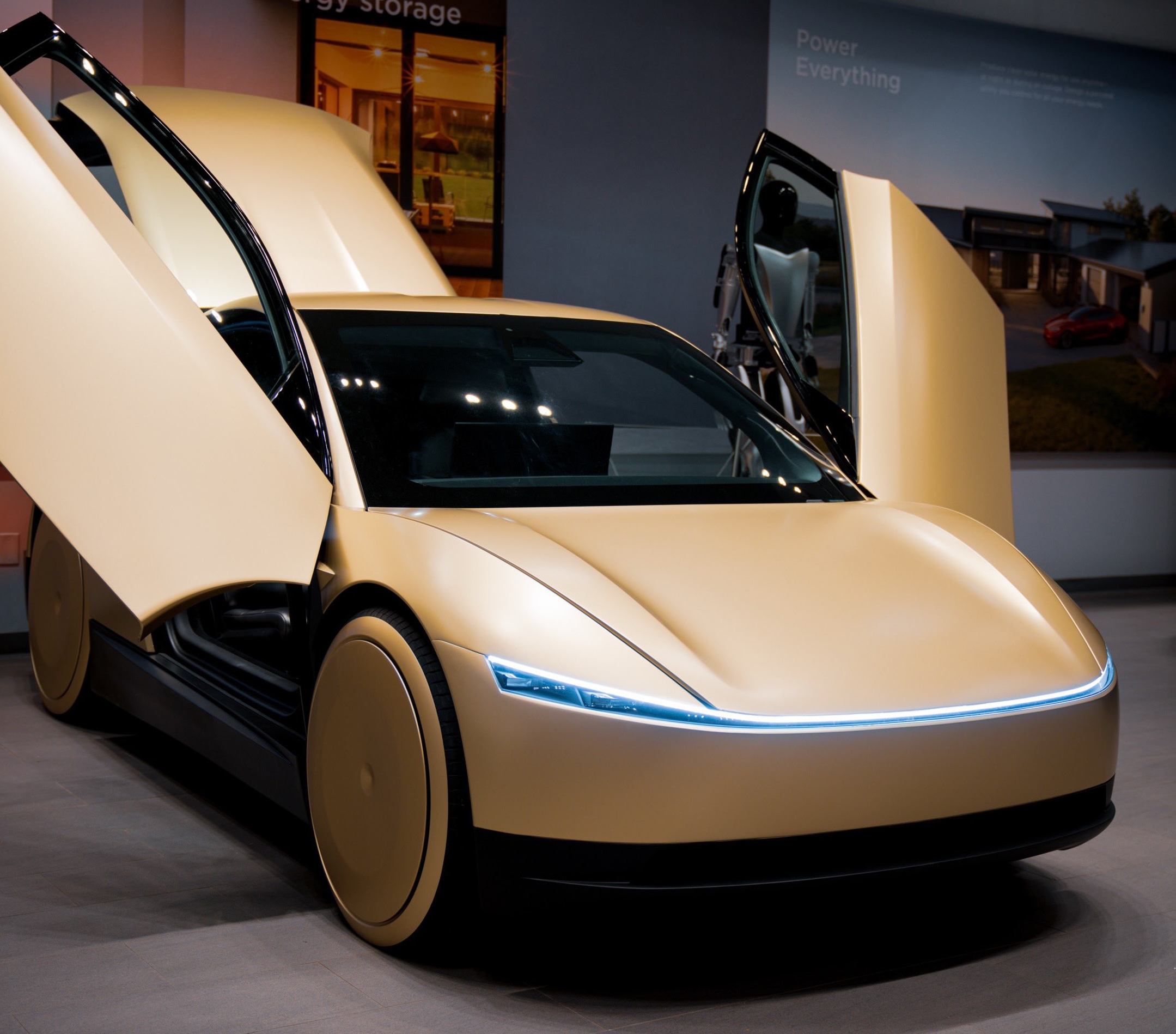
Tesla Robotaxi just got a big benefit from the U.S. Government, as the National Highway Traffic Safety Administration (NHTSA) is looking to ease some rules and streamline the application process that could hinder the development and licensing of autonomous vehicles.
Tesla is set to launch its Robotaxi platform in the coming days or weeks, but regulation on autonomous vehicles is incredibly slim, so automakers are left in a strange limbo as permissions to operate are usually up to local jurisdictions.
The NHTSA still has the ultimate say, but it is now adopting a new strategy that will see companies gain an exemption from federal safety standards and streamline the entire application process.
The agency is authorized to grant exemptions to permit manufacturers to produce vehicles over a two or three-year period that might not comply with certain Federal Motor Vehicle Safety Standards (FMVSS). Robotaxi, for example, will eventually not have a steering wheel or pedals, through the Cybercab that Tesla unveiled last October.
The exemption program the NHTSA announced today would be possible through Part 555 of the National Traffic and Motor Vehicle Safety Act:
“NHTSA may grant a Part 555 exemption if at least one of four bases listed in the statute is met and NHTSA determines that the exemption is consistent with the public interest and the Safety Act. The statute also authorizes NHTSA to subject an exemption to terms the agency deems appropriate and requires that NHTSA publish notice of the application and provide an opportunity to comment.”
The rapid and non-stop innovation that is being performed is tough to keep up with from a legal standpoint. The NHTSA recognizes this and says current legislation is appropriate for traditional vehicles, but not for the self-driving cars companies are producing now:
“The current Part 555 process was designed for traditional vehicles. As currently applied, this process is not well suited for processing exemptions involving ADS-equipped vehicles in a timely manner or overseeing the unique complexities involving their operations. This has resulted in long processing times for applications for ADS-equipped vehicles. NHTSA must improve its Part 555 processing times substantially to keep pace with the rapid innovation of the ADS industry and to ensure that exemptions remain effective tools for nurturing groundbreaking safety technologies.”
Now, the NHTSA will be “enhancing application instructions” to help manufacturers understand the requirements involved in the application process. This will streamline the entire process by “reducing the need for NHTSA to request additional information from the manufacturer,” the agency says.
First Tesla driverless robotaxi spotted in the wild in Austin, TX
Next, the NHTSA is going to have a more flexible approach to evaluating exemptions for ADS-equipped vehicles:
“To build flexibility into the Part 555 process while also accounting for the unique aspects of those exemptions, NHTSA intends to develop terms that could be included in Part 555 exemption grants, when appropriate, to condition operations of exempted ADS-equipped vehicles on enhanced and continuing oversight from NHTSA. NHTSA would expect to administer this enhanced oversight through letters, which could be updated over time, mirroring real-world ADS development. This will enable NHTSA to focus its initial review during the application stage and align the Part 555 oversight approach more closely to exemptions administered under NHTSA’s Automated Vehicle Exemption Program (AVEP), which have proven effective for ADS.”
This will benefit any company making autonomous vehicles, but it will especially benefit Tesla in the short-term as it is readying for the launch of Robotaxi.
Tesla is trading up 1.89 percent at the time of publication.
Part 555 Letter June 2025 by Joey Klender on Scribd
News
SpaceX produces its 10 millionth Starlink kit
The first 5 million Starlink kits took nearly four years to build.

SpaceX has achieved a major milestone, producing its 10 millionth Starlink kit. The accomplishment was celebrated across the company’s Hawthorne, California, and Bastrop, Texas, facilities.
The milestone was shared in social media by Sujay Soman, Senior Facilities Engineer, in a LinkedIn post, which has since been deleted.
Starlink Production Ramp
Soman noted in his LinkedIn post that the first 5 million Starlink kits took nearly four years to build, but the next 5 million kits were completed in just 11 months. This underscores SpaceX’s intense efforts to ramp up the satellite internet system’s production, and it reflects the private space company’s manufacturing prowess.
The SpaceX Senior Facilities Engineer shared a couple of photos of the Machine Maintenance and Facilities team in Bastrop to commemorate the event.
“Today, Starlink Product teams across our Hawthorne and Bastrop sites produced the 10th Million Starlink Kit! It took almost 4 years to build our first 5 million kits, and we doubled that in about 11 months. Monumental accomplishment!” Soman wrote in his post.
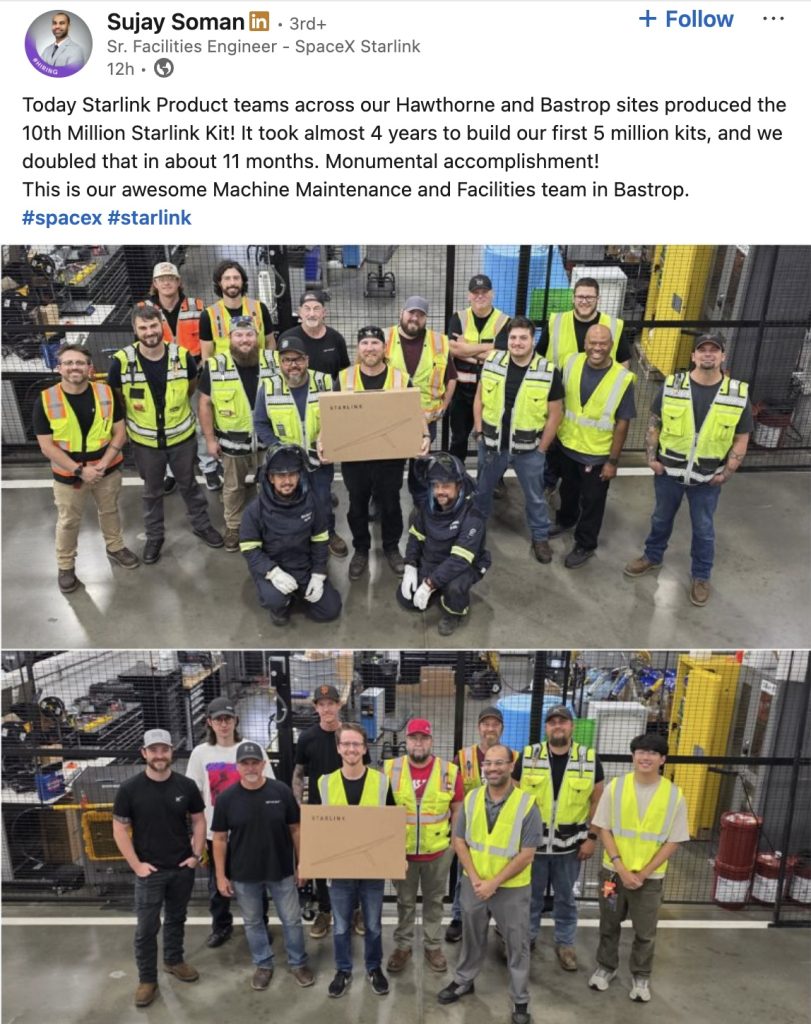
World-Changing Technology
The Starlink kits, featuring dish hardware and supporting equipment, enable users to connect to the company’s growing constellation of low Earth orbit satellites. With over 6,000 satellites launched to date, Starlink now provides fast and reliable internet connectivity to over 6 million customers worldwide. This was a significant increase from the 5 million customers that the company reported in February 2025.
SpaceX has not detailed its next production targets, but the production of Starlink’s 10 millionth kit milestone signals the company’s readiness to scale further. Being an Elon Musk-led company, SpaceX is arguably the best in the business when it comes to efficient and cost-effective manufacturing. It would then be unsurprising if SpaceX announces another Starlink production milestone soon.
News
Tesla retires yoke steering wheel in base Model S and X
Tesla’s controversial steering yoke is now exclusive to the Model S and Model X Plaid.
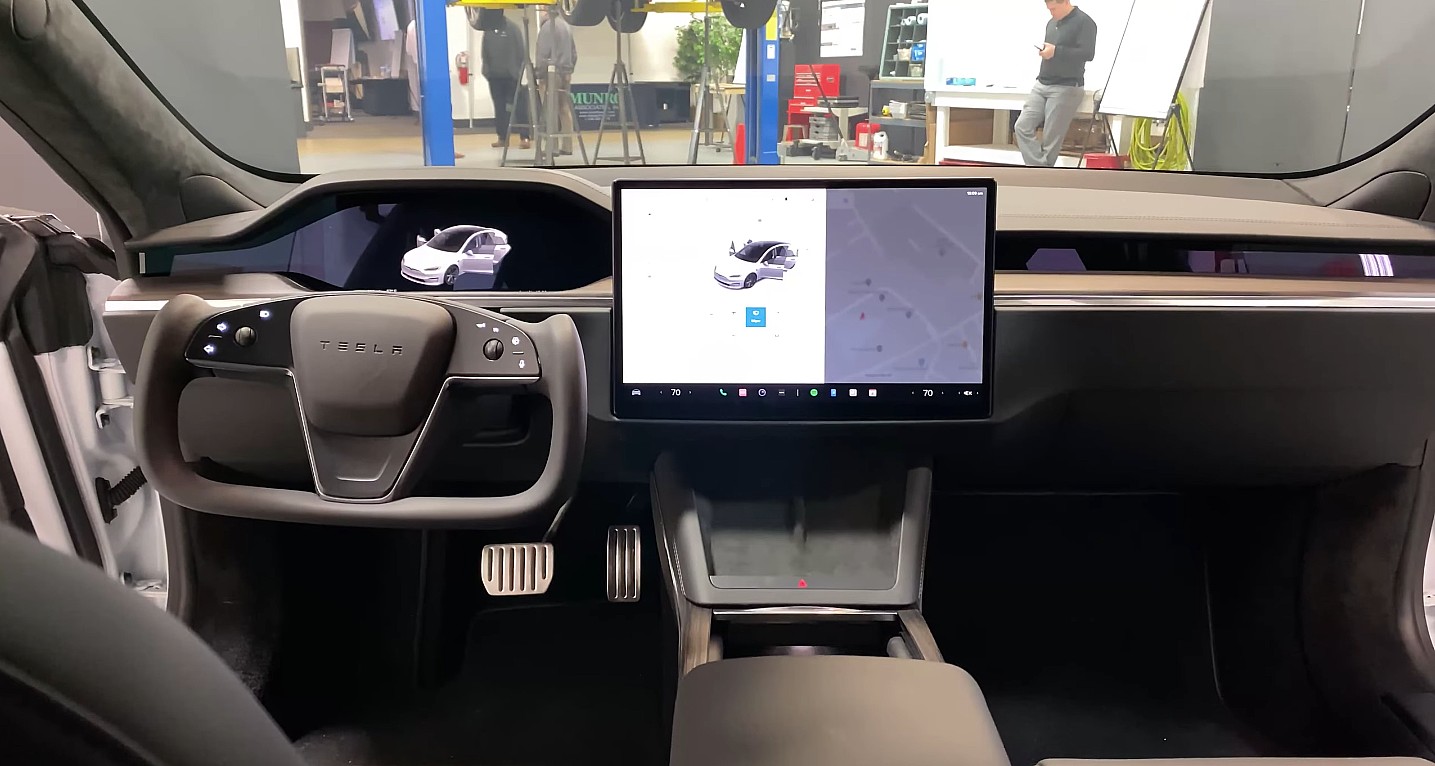
Tesla has closed a chapter in the saga of the Model S and Model X’s controversial steering yoke. Following the announcement of the new iterations of the flagship vehicles, Tesla promptly removed the steering option for the vehicles’ base variants.
This means that if drivers wish to experience the Model S or Model X with a yoke, they would have to go Plaid.
The new Model S and Model X
The refresh of the Model S and Model X were quite minor, with the two vehicles featuring a new front camera, a new color, and a handful of other small changes like new exterior styling for the Model S Plaid. Tesla also noted on its website that the two vehicles now have a much smoother and quieter ride.
The changes were quite polarizing, with some appreciating the subtle improvements made to the two flagship cars and others arguing that Tesla should have done more. Others, however, noted that the level of improvements implemented on the Model S and Model X would already be considered major refresh for a tech company like Apple.
No More Yoke Unless Plaid
When Tesla refreshed the Model S and Model X in 2021, the vehicles were released with a steering yoke as standard. The yoke was controversial, with critics stating that it was unsafe and fans stating that it made driving the Model S and Model X fun. Tesla later introduced a round steering wheel option for the Model S and Model X, which later became standard on the two flagship vehicles.
This remains true today, with the most recent versions of the Model S and Model X still being released with a round steering wheel as standard. Those who wish to experience the Model S and Model X Plaid as envisioned by the company and its CEO, Elon Musk, however, might find it a good idea to spend the extra $1,000 for the vehicles’ yoke steering wheel.
-
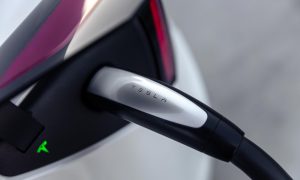
 News2 weeks ago
News2 weeks agoTesla to lose 64 Superchargers on New Jersey Turnpike in controversial decision
-

 News4 days ago
News4 days agoI took a Tesla Cybertruck weekend Demo Drive – Here’s what I learned
-
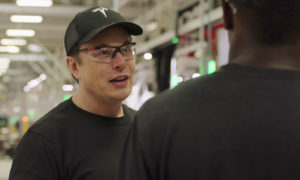
 Elon Musk1 week ago
Elon Musk1 week agoElon Musk explains Tesla’s domestic battery strategy
-
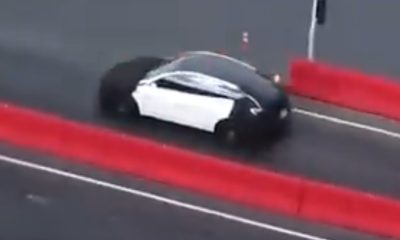
 News2 weeks ago
News2 weeks agoTesla’s apparent affordable model zips around Fremont test track
-

 Elon Musk2 weeks ago
Elon Musk2 weeks agoTesla stock: Morgan Stanley says eVTOL is calling Elon Musk for new chapter
-
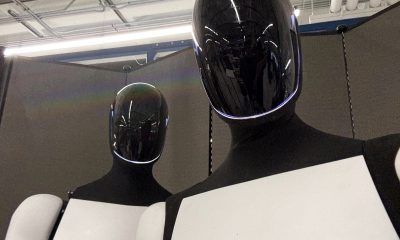
 Elon Musk5 days ago
Elon Musk5 days agoTesla tops Cathie Wood’s stock picks, predicts $2,600 surge
-
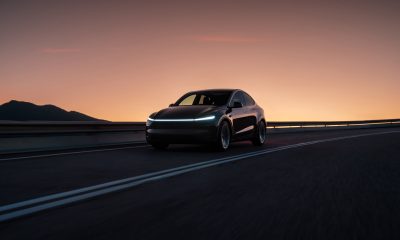
 Investor's Corner2 weeks ago
Investor's Corner2 weeks agoTesla bull writes cautious note on Robotaxi launch: ‘Keep expectations well contained’
-

 Elon Musk2 weeks ago
Elon Musk2 weeks agoElon Musk responds to Tesla Supercharger shutdown on NJ Turnpike


